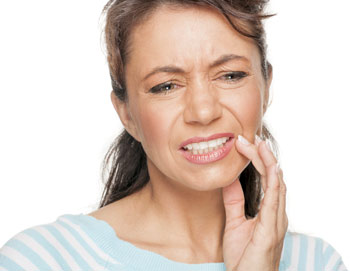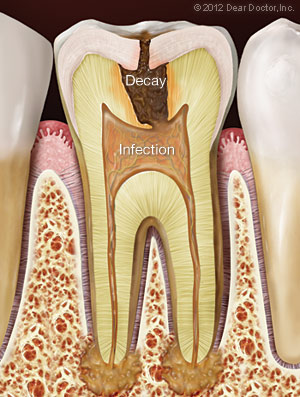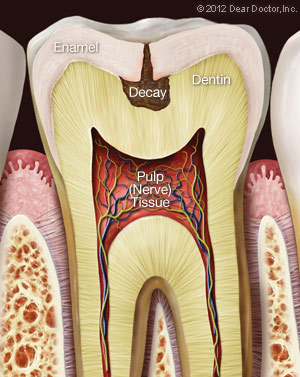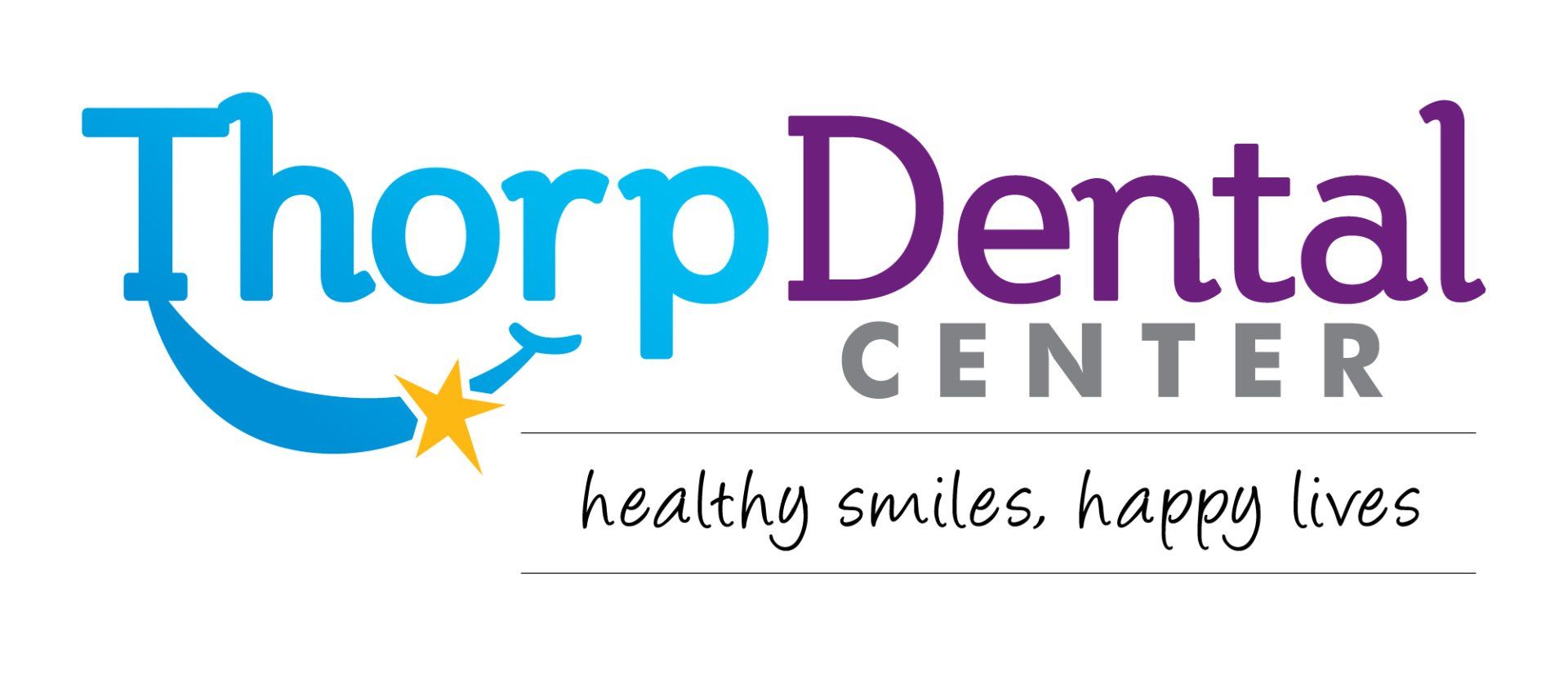Emergency Care
Emergency Care
Since 1974 | Patient Referral Program | Locally Owned
Quick Links:
Emergency Care

When you have a dental emergency — whether it's caused by a sudden accident or chronic disease — your teeth and/or the tissues of the mouth that surround them need to receive proper care right away. As with any type of medical emergency, it's important to be aware, before you're actually in the situation, of what you can do to ensure the best outcome.
Traumatic Dental Injuries
A knocked-out permanent tooth requires quick thinking and immediate action. You'll increase the chances that the tooth can be saved if you pick it up without touching the root, gently clean it off with water, and put it back in its socket facing the correct way. Hold it in place with gentle pressure as you rush to the dental office or emergency room. If you can't replant it immediately, tuck it between the patient's cheek and gum, or carry it in a container of cold milk.
For a more traumatic injury such as a tooth that has been moved or loosened, treatment needs to occur within six hours. However, if there is uncontrollable bleeding, go immediately to the ER. Fortunately, other denta
l injuries that happen most frequently are less severe. The most common traumatic dental injuries are chipped teeth. If a tooth is chipped, try to find any pieces that have come off, as it might be possible to reattach them. Make an appointment for an office visit as soon as possible, and bring the pieces with you.
Toothache
Occasional or momentary sensitivity to hot or cold foods may be caused by a tiny area of decay, a loose filling, or a small amount of gum recession that has exposed the roots of the teeth. To alleviate the symptoms, you can try using a soft brush and toothpaste formulated for sensitive teeth, for a couple of weeks. If that doesn't help, call the dental office to schedule and appointment. Dental treatment itself sometimes causes temporary sensitivity, which can often be relieved by the same methods. If pain persists or grows worse, however, be sure to seek treatment.
A severe sinus headache or congestion from colds or flu may cause you to experience symptoms such as a dull ache or pressure in the upper teeth and jaw. When the illness goes away, the dental distress should cease too. Tooth clenching or grinding (bruxism) has also been known to cause this type of discomfort. If you have these habits, you may want to have a nightguard made at the dental office to protect your teeth and jaws from too much force.
No matter what type of tooth pain or discomfort you are experiencing, it is important to seek treatment if it persists.
Gum Emergencies
Injuries and infections involving the soft tissues of the mouth may also require emergency treatment. The tissues of the gums, tongue, or cheek lining can be damaged by accidental bites, falls, sports injuries, and scalding liquids. They may also suffer injury from foreign bodies that become lodged below the gum line, and they can develop painful and potentially serious abscesses. A periodontal (gum) abscess is a pus-filled sac caused by an infection and is usually quite painful. Abscesses require immediate attention at the dental office.
Any injury to the soft tissues of the mouth should be rinsed with dilute salt water. If there is visible debris, it should be cleared. Bleeding can usually be controlled by pressing a clean, damp material to the area for 10-15 minutes. If this does not work, go to the emergency room immediately.
A foreign body lodged beneath the gum line can sometimes be gently worked out with dental floss or a toothpick. But if this can't be accomplished easily, make a dental appointment so the area does not become damaged and/or infected.
Orthodontic Emergencies
Although there can be discomfort associated with orthodontic treatment, there are only a few true orthodontic emergencies. They include trauma or injury to the teeth, face or mouth. Infection or swelling of the gums, mouth or face, and severe, unmanageable discomfort or pain in these areas can also be orthodontic emergencies. In any of these situations, seek immediate care from the dental office or emergency room — whichever is your best option. For loose, broken or irritating pieces of orthodontic hardware, please call the dental office for advice.
Related Articles:
Gum Injuries
Top
When dental emergencies and pain occur, our attention is often focused on diseases and injuries related to the teeth. However, it's important to remember that the soft tissues of the mouth — the gums, tongue, lips and cheek lining — may also be affected. While they are tough enough to stand up to the oral environment, these tissues can be damaged by accidental bites, falls, sports injuries, and scalding liquids. They may also suffer injury from foreign bodies that become lodged below the gum line, and they can develop painful and potentially serious abscesses.
First Aid for Soft Tissues
Soft tissue injuries in the mouth don't usually bleed excessively — although blood mixing with saliva may make any bleeding appear worse than it actually is. To assist someone with this type of injury, you should first try to rinse the mouth with a dilute salt water solution. If a wound is visible, it can be cleaned with mild soap and water; if that isn't possible, try to remove any foreign material by hand, and rinse again.
Bleeding can usually be controlled by pressing damp gauze (or, if unavailable, another clean material) directly to the site of the injury, and keeping it there for 10-15 minutes. If the bleeding doesn't stop, immediate medical attention will be needed. Try to see a dentist within 6 hours of the injury for evaluation and treatment. This usually involves determining the extent of the damage, performing initial restorative procedures, and occasionally suturing (stitching) the wound. An antibiotic and/or tetanus shot may also be given.
Foreign Bodies
Occasionally, foreign objects may become lodged in the space between teeth and gums, causing irritation and the potential for infection. There are a few foods (such as popcorn husks) that seem especially prone to doing this, but other items placed in the mouth — like wood splinters from toothpicks or bits of fingernail, for example — can cause this problem as well.
If you feel something stuck under the gum, you can try using dental floss to remove it: Gently work the floss up and down below the gum line to try and dislodge the object. Light pressure from a toothpick may also help work it free — but avoid pressing too hard or pushing the object in deeper. If that doesn't work, see a dentist as soon as possible. Special tools may be needed to find and remove the object, and you may be given medication to prevent infection.
Periodontal Gum Abscesses
Sometimes called a gum boil, an abscess is a pus-filled sac that may form between teeth and gums. It is caused by an infection, which may have come from food or other objects trapped beneath the gum line, or from uncontrolled periodontal disease. Because pressure builds up quickly inside them, abscesses are generally quite painful. Symptoms may include a throbbing toothache which comes on suddenly, tenderness and swelling of the gums or face, and sometimes fever. Occasionally, pus draining into the mouth through an opening in the sac relieves the pressure and pain, but may cause a strange taste.If left untreated, abscesses can persist for months and cause serious health problems, including infections that spread to other parts of the body. That's why it is important to see a dentist right away if you experience symptoms. He or she will find the location of the abscess and treat it appropriately. Treatment usually involves draining the pus and fluid, thoroughly cleaning the affected area, and controlling the infection.

Related Articles:
Orthodontic Emergencies
Top
At first, having orthodontic treatment may take a little getting used to. It isn't uncommon to experience a bit of soreness when appliances are first put on, or some minor aches as teeth begin moving into new positions. Yet it's comforting to know that genuine orthodontic emergencies are rare.
If you think you may have an emergency, however, the first step is to determine the severity of the problem: Is it an urgent situation that requires immediate attention, or a minor problem that you can take care of yourself, temporarily, until you can come in to the office?
A Major Emergency
There are only a few true orthodontic (or dental) emergencies. They include:
* Trauma or injury to the teeth, face or mouth
* Infection or swelling of the gums, mouth or face
* Severe, unmanageable discomfort or pain in these areas
In any of these situations, you should seek help as soon as possible — go to an emergency room, if that's your best option. Generally, however, the place to start is at the dental office. If, for example, you have a fractured tooth, that immediate problem requires diagnosis and treatment. Afterwards your orthodontic treatment plan can be adjusted as needed. Likewise, severe pain or swelling could be a sign of infection or disease, which also needs immediate treatment.
Some Minor Troubles
Fortunately, the vast majority of orthodontic problems are minor compared to these situations — but they may still cause discomfort or irritation. In general, it's best to try and soothe the immediate cause of the discomfort, and then call for an appointment. Here are a few of the more common orthodontic problems, along with some tips on what you can do to relieve them at home:
Loose or broken brackets, bands or wires
This problem is often caused by eating hard or sticky candy or food, or playing with the braces. If the band or bracket is still attached to the wire, leave it as is — but don't connect any elastics to it! You can cover it with orthodontic wax if it's irritating the inside of your mouth. If it has come off, save it. In either case, call our office to let us know what happened, and we will recommend the next step.
Misplaced or poking archwire, bracket or tie
As the teeth start to move, the wire that connects them (archwire) may begin poking near the back of the mouth or irritating the cheeks. You can try moving the wire into a better position with a pencil eraser or a Q-Tip. If the wire won't move, you may be able to cut the end off with a nail clipper sterilized in alcohol — but before doing so, please call for guidance or instructions. Often, you can also use tweezers to gently move a misplaced wire or a tie that's causing problems.
When wires or brackets cause irritation, covering the metal parts with wax will often help ease the discomfort. As with any of these types of problems, it's best to make an appointment so it can be taken care of.
General tooth pain or loosening
It's normal for teeth to become slightly loosened during orthodontic treatment — that shows they're moving! Sometimes, this movement may be accompanied by tenderness, especially after braces are placed or adjusted. For minor soreness, you can use your regular over-the-counter pain reliever. A twice-a-day salt-water rinse may also help: Mix one teaspoon of salt in an 8-ounce glass of warm water, and rinse for 30 seconds. A warm washcloth or heating pad placed on the outside of the jaw can also offer some relief.
While actual emergencies are rare, the goal is to make orthodontic treatment as comfortable as possible.
Tooth Pain
Top
At one time or another, almost everyone has probably experienced some degree of tooth pain, from minor aches and sensitivity to acute distress. In general, the sensation of pain is a protective response that tells the body something is wrong. But when it affects your teeth, the exact source of the pain can be difficult to pinpoint; it may also come and go in response to other stimuli, like eating hot foods. So what is tooth pain signaling, and what should you do about it?
The most common cause of dental pain is tooth decay, a bacterial infection that can spread through many parts of the tooth, and even into the gum tissue. Traumatic damage and gum disease can also result in tooth pain.
The only sure way to know what's causing tooth pain is to see a dentist, who will ask detailed questions about what you're feeling and perform diagnostic tests, such as x-rays, to try and identify the exact source of the pain. However, there are some general ways to describe the sensations you may be experiencing — and their potential cause.

Severe Pain/Root Canal Emergencies
Constant, severe pain and pressure, swelling of the gums, and sensitivity to touch indicate an infection in the tooth, possibly accompanied by an abscess (inflamed, pus-filled sac) in the surrounding gum and bone tissue. In this case, it's important to see a dentist or endodontist right away — not only to relieve the pain, but also to save the tooth while it's still possible. Treatment may include a root canal to remove diseased or dying pulp tissue, and/or periodontal procedures to drain the abscess and stop the infection.
Lingering pain after eating hot or cold foods usually indicates disease in the pulp tissue deep inside the tooth. Deep decay or physical trauma to the tooth may have allowed bacteria to infect the pulp tissue or compromise the pulp vitality. As nerves inside the pulp tissue die, the pain may go away, but the infection won't — in fact, it can spread and cause significant damage. Make an appointment to see a dental professional as soon as possible; a root canal may be needed to ease the pain and preserve the tooth.
Sharp pain when biting down on food can be caused by severe tooth decay, a loose filling, a crack in the tooth, or possibly by damaged pulp tissue inside the tooth. It should be evaluated by a dentist as soon as possible. Depending on the cause, treatment may involve filling, bonding, root canal therapy, or other procedures.

Toothache
Occasional or momentary sensitivity to hot or cold foods may be caused by a tiny area of decay, a loose filling, or a small amount of gum recession that has exposed the roots of the teeth. To alleviate the symptoms, you can try using a soft brush and toothpaste formulated for sensitive teeth, for a couple of weeks. If that doesn't help, call the dental office to schedule and appointment. Dental treatment itself sometimes causes temporary sensitivity, which can often be relieved by the same methods. If pain persists or grows worse, however, be sure to seek treatment.
A severe sinus headache or congestion from colds or flu may cause you to experience symptoms such as a dull ache or pressure in the upper teeth and jaw. When the illness goes away, the dental distress should cease too. Tooth clenching or grinding (bruxism) has also been known to cause this type of discomfort. If you have these habits, you may want to have a nightguard made at the dental office to protect your teeth and jaws from too much force.
No matter what type of tooth pain or discomfort you are experiencing, it is important to seek treatment if it persists.
Related Articles:
Traumatic Dental Injuries
Top
Traumatic dental injuries can occur in people of all ages and activity levels. The cause might be a car accident, a fall down the stairs, or an elbow to the face during a basketball game. As with most types of dental treatment, the primary goal when treating a traumatic dental injury is to save teeth at risk of being lost, and restore them to full function and normal appearance. In many cases, the difference between saving and losing a tooth depends on taking the proper action in the immediate aftermath of an injury. Here are some guidelines on how to prevent sports-related dental injuries and what to do after a dental injury occurs.

Sports-Related Dental Injuries
Americans of all ages love playing sports — so much so that participation in high school sports has been increasing for 24 consecutive years, according to one survey. Yet to gain the very real benefits that sports offer, it's necessary to accept — and prepare for — the risk of injury.
Chipped or Broken Teeth
Chipped teeth are the most common dental injury, according to the American Association of Endodontists. If teeth have been chipped or fractured, or if they are loose or tender to the touch, make sure to see a dentist within 12 hours. Try to locate any pieces of the tooth that have come off, as it may be possible to reattach them to the crown with tooth-colored bonding material.

Knocked-out Teeth
If a permanent tooth has been knocked out of its socket (avulsed), immediate attention is required. First, recover the tooth — and if it's dirty, gently clean it off with water. Try not to touch the root portion of the tooth. Next, if possible, place the tooth back into its socket (making sure it is in the proper orientation), and apply gentle, sustained pressure to the area for five minutes. You can use a wad of wet tissue or gauze to help grasp and hold the tooth in place. Get emergency dental treatment as soon as possible afterward, and be sure to check whether a tetanus shot or booster is needed.If it isn't possible to replant the tooth, have the patient hold it between his teeth and cheek, or place it into a plastic bag with the patient's saliva, or into a cup of cold milk. Control bleeding from the tooth socket by applying pressure to the area (use gauze if possible), and get the patient and the tooth to an emergency treatment center as soon as possible. Primary (baby) teeth, however, don't usually need to be replanted.
Partially Displace Teeth
If teeth are driven into or pushed partially out of the jaw, or if they are out of alignment, the patient should see a dentist or oral surgeon within six hours of the accident. A careful examination of the mouth (plus x-rays if needed) should reveal the extent of the damage, and indicate what restorative treatments are likely to be required.
In addition to the teeth, dental injuries often involve damage to the gums, the tongue, and the inside of the mouth. When these soft-tissue injuries occur, it's best to take the following immediate actions, and then see a dentist as soon as possible: Wash and rinse the area with soap and water if possible, or remove debris and foreign material by hand. Bleeding can usually be controlled by applying direct, gentle pressure to gauze pads placed on the wound. If it can't be controlled after about 10 minutes, go to an emergency room.
Don't hesitate to call the dental office for more specific information about handling a traumatic dental injury.
Related Articles:
Our Facebook Feed
Privacy Policy
| Do Not Share My Information
| Conditions of Use
| Notice and Take Down Policy
| Website Accessibility Policy
© 2024
The content on this website is owned by us and our licensors. Do not copy any content (including images) without our consent.

